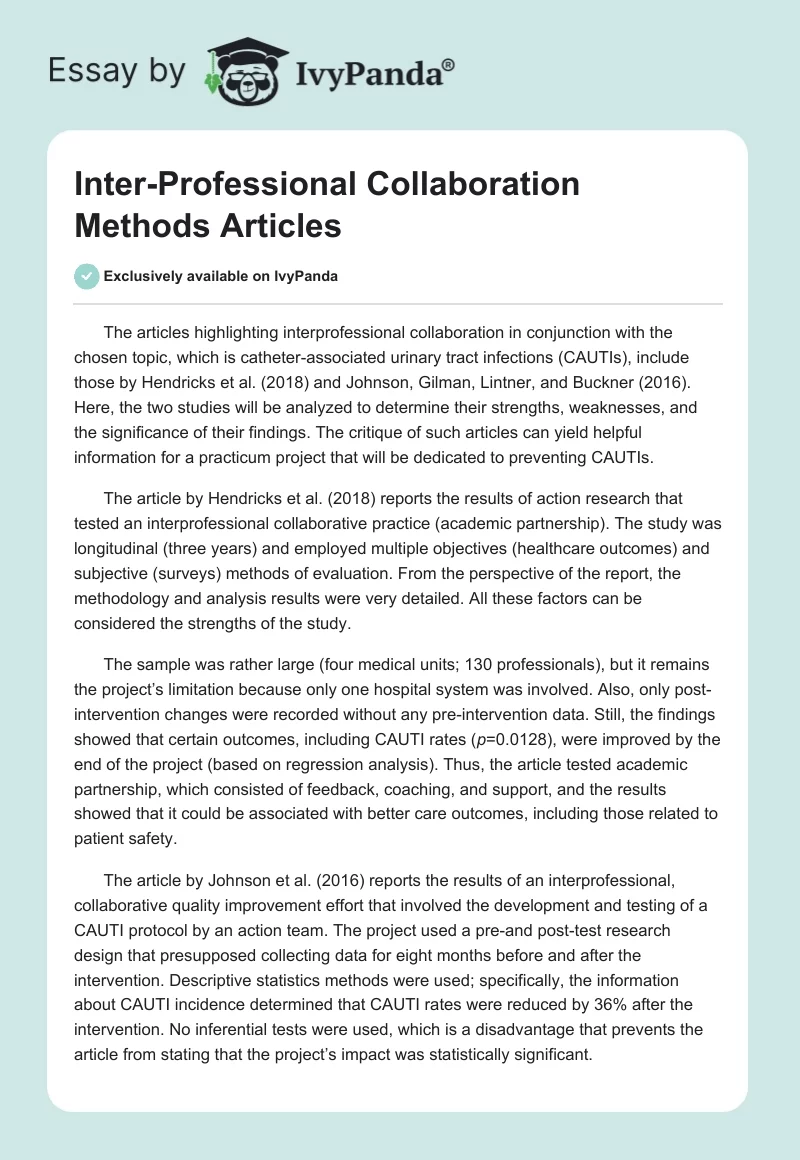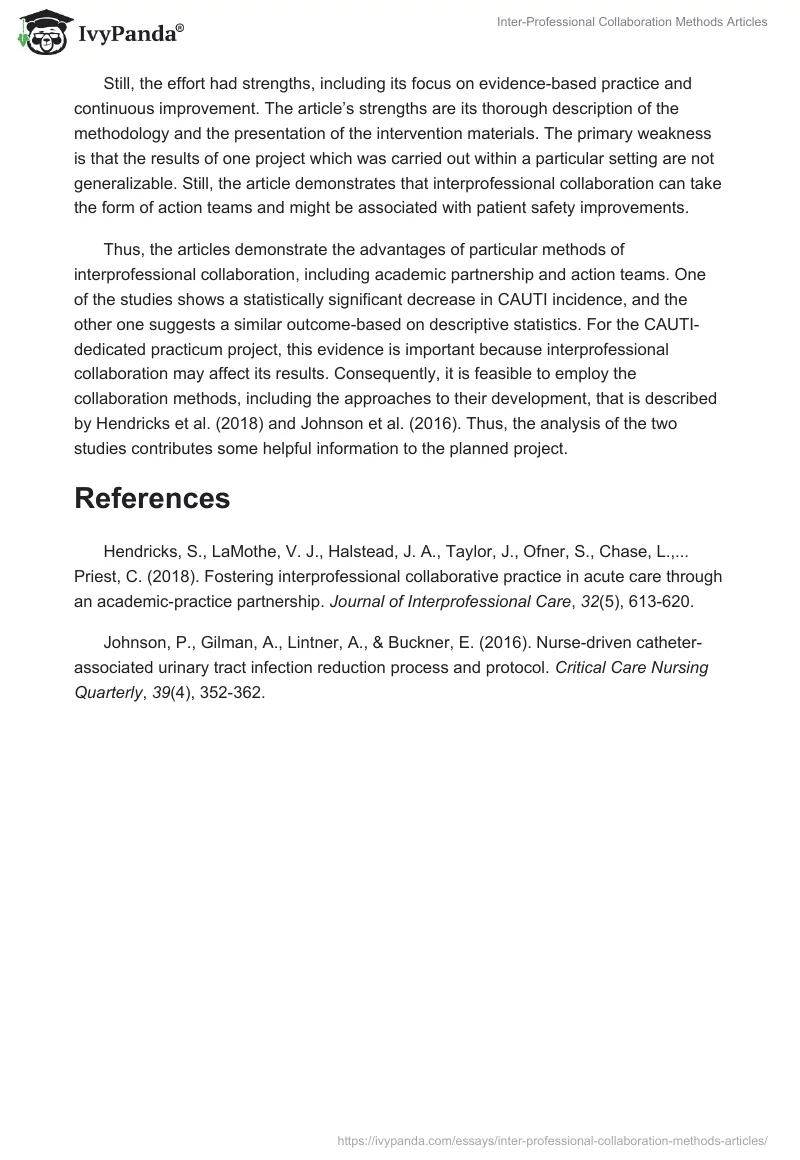The articles highlighting interprofessional collaboration in conjunction with the chosen topic, which is catheter-associated urinary tract infections (CAUTIs), include those by Hendricks et al. (2018) and Johnson, Gilman, Lintner, and Buckner (2016). Here, the two studies will be analyzed to determine their strengths, weaknesses, and the significance of their findings. The critique of such articles can yield helpful information for a practicum project that will be dedicated to preventing CAUTIs.
The article by Hendricks et al. (2018) reports the results of action research that tested an interprofessional collaborative practice (academic partnership). The study was longitudinal (three years) and employed multiple objectives (healthcare outcomes) and subjective (surveys) methods of evaluation. From the perspective of the report, the methodology and analysis results were very detailed. All these factors can be considered the strengths of the study.
The sample was rather large (four medical units; 130 professionals), but it remains the project’s limitation because only one hospital system was involved. Also, only post-intervention changes were recorded without any pre-intervention data. Still, the findings showed that certain outcomes, including CAUTI rates (p=0.0128), were improved by the end of the project (based on regression analysis). Thus, the article tested academic partnership, which consisted of feedback, coaching, and support, and the results showed that it could be associated with better care outcomes, including those related to patient safety.
The article by Johnson et al. (2016) reports the results of an interprofessional, collaborative quality improvement effort that involved the development and testing of a CAUTI protocol by an action team. The project used a pre-and post-test research design that presupposed collecting data for eight months before and after the intervention. Descriptive statistics methods were used; specifically, the information about CAUTI incidence determined that CAUTI rates were reduced by 36% after the intervention. No inferential tests were used, which is a disadvantage that prevents the article from stating that the project’s impact was statistically significant.
Still, the effort had strengths, including its focus on evidence-based practice and continuous improvement. The article’s strengths are its thorough description of the methodology and the presentation of the intervention materials. The primary weakness is that the results of one project which was carried out within a particular setting are not generalizable. Still, the article demonstrates that interprofessional collaboration can take the form of action teams and might be associated with patient safety improvements.
Thus, the articles demonstrate the advantages of particular methods of interprofessional collaboration, including academic partnership and action teams. One of the studies shows a statistically significant decrease in CAUTI incidence, and the other one suggests a similar outcome-based on descriptive statistics. For the CAUTI-dedicated practicum project, this evidence is important because interprofessional collaboration may affect its results. Consequently, it is feasible to employ the collaboration methods, including the approaches to their development, that is described by Hendricks et al. (2018) and Johnson et al. (2016). Thus, the analysis of the two studies contributes some helpful information to the planned project.
References
Hendricks, S., LaMothe, V. J., Halstead, J. A., Taylor, J., Ofner, S., Chase, L.,… Priest, C. (2018). Fostering interprofessional collaborative practice in acute care through an academic-practice partnership. Journal of Interprofessional Care, 32(5), 613-620.
Johnson, P., Gilman, A., Lintner, A., & Buckner, E. (2016). Nurse-driven catheter-associated urinary tract infection reduction process and protocol. Critical Care Nursing Quarterly, 39(4), 352-362.


